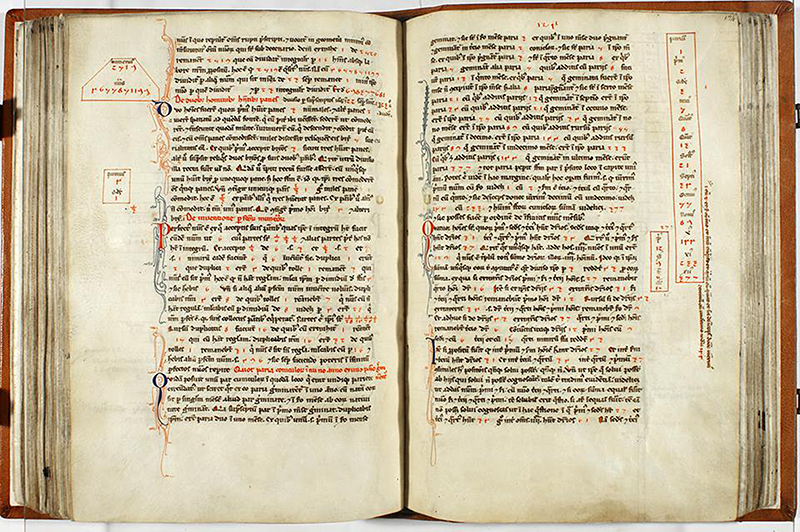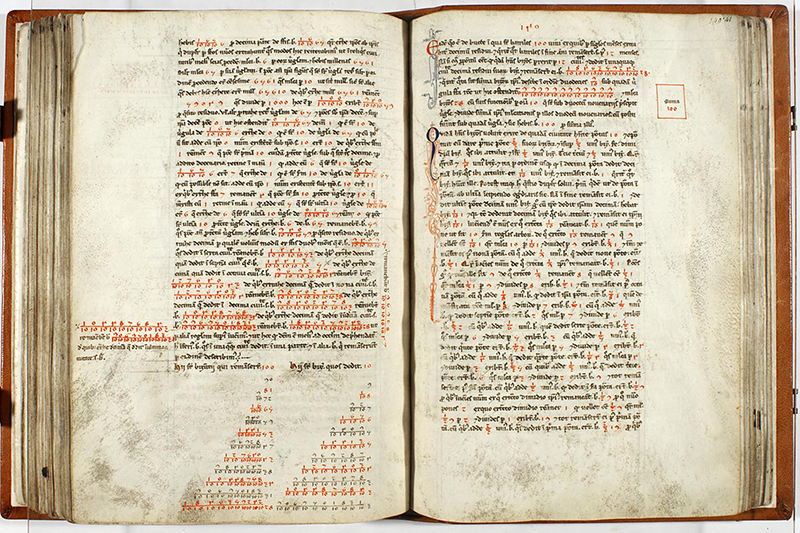- About MAA
- Membership
- MAA Publications
- Periodicals
- Blogs
- MAA Book Series
- MAA Press (an imprint of the AMS)
- MAA Notes
- MAA Reviews
- Mathematical Communication
- Information for Libraries
- Author Resources
- Advertise with MAA
- Meetings
- Competitions
- Programs
- Communities
- MAA Sections
- SIGMAA
- MAA Connect
- Students
- MAA Awards
- Awards Booklets
- Writing Awards
- Teaching Awards
- Service Awards
- Research Awards
- Lecture Awards
- Putnam Competition Individual and Team Winners
- D. E. Shaw Group AMC 8 Awards & Certificates
- Maryam Mirzakhani AMC 10 A Awards & Certificates
- Two Sigma AMC 10 B Awards & Certificates
- Jane Street AMC 12 A Awards & Certificates
- Akamai AMC 12 B Awards & Certificates
- High School Teachers
- News
You are here
Mathematical Treasure: Liber Abaci of Leonardo of Pisa
Leonardo of Pisa (ca.1180-1241), more commonly known as Fibonacci (Son of Bonacci), was an Italian merchant who spent his youth in North Africa. As a young man attending to his family’s trade in Africa, he studied mathematics from Islamic teachers. From them, he learned of the “Hindu-Arabic” numerals and their computing algorithms as used in business transactions. Impressed by this new knowledge, he returned to Pisa where he disseminated it by writing Liber abaci (Book of Calculation) in 1202. He wrote a later edition in 1212. These works became a major force in introducing and bringing about the European adoption of this new number system and mathematics. A complete English language translation of Liber abaci was compiled and published by Laurence E. Sigler in 2003.
On the pages below is Leonardo’s famous rabbit problem with its solution given in the column of numbers on the far right: 1, 2, 3, 5, 8, ..., 377, now known as the “Fibonacci sequence.” Sigler’s translation of this problem and solution is found on page 404 of his book.

The pages below show demonstration problems involving computations with fractions:

The Liber abaci famously begins with Leonardo's introduction of the "nine Indian figures," 9, 8, 7, 6, 5, 4, 3, 2, and 1. On the lefthand page in the image below, one can see that, in this 14th century manuscript, all but the figure for 5 are nearly identical to the digits we use today. In order to demonstrate how to use these figures positionally to represent larger numbers, Leonardo's next task was to show his readers how to convert Roman numerals to Indo-Arabic numerals. The right-hand page contains a diagram showing the conversion of Roman numerals into those of the Indians: proceeding from left to right, MI = 1001 .... MMMMCCCXXI = 4321. The image of these two pages is unfortunately quite blurry:

Sigler's book begins with a translation of the following autobiographical account by Leonardo at the start of his manuscript (Sigler 2002; see Richard Grimm's 1973 article for another translation):
As my father was a public official away from our homeland in the Bugia [in modern-day Algeria] customs house established for the Pisan merchants who frequently gathered there, he had me in my youth brought to him, looking to find for me a useful and comfortable future; there he wanted me to be in the study of mathematics and to be taught for some days. There from a marvelous instruction in the art of the nine Indian figures, the introduction and knowledge of the art pleased me so much above all else, and I learnt from them, whoever was learned in it, from nearby Egypt, Syria, Greece, Sicily and Provence, and their various methods, to which locations of business I travelled considerably afterwards for much study, and I learnt from the assembled disputations. But this, on the whole, the algorithm and even the Pythagorean arcs, I still reckoned almost an error compared to the Indian method. Therefore strictly embracing the Indian method, and attentive to the study of it, from mine own sense adding some, and some more still from the subtle Euclidean geometric art, applying the sum that I was able to perceive to this book, I worked to put it together in xv distinct chapters, showing certain proof for almost everything that I put in, so that further, this method perfected above the rest, this science is instructed to the eager, and to the Italian people above all others, who up to now are found without a minimum. If, by chance, something less or more proper or necessary I omitted, your indulgence for me is entreated, as there is no one who is without fault, and in all things is altogether circumspect.
The nine Indian figures are:
9 8 7 6 5 4 3 2 1
With these nine figures, and with the sign 0 which the Arabs call zephir any number whatsoever is written.
References
Grimm, Richard E. The Autobiography of Leonardo Pisano. The Fibonacci Quarterly 11[1973](1):99-10.
Sigler, Laurence E. Fibonacci’s Liber Abaci. New York: Springer, 2002.
The excerpts viewed here are from a 14th century copy of Liber Abaci owned by the National Library of Florence (Biblioteca Nazionale Centrale di Firenze) and through whose courtesy they appear. As of March of 2019, the righthand page in the first image above (containing the Fibonacci numbers in its righthand margin) could also be viewed in the Wikipedia article "Liber Abaci."
Frank J. Swetz (Pennsylvania State University), "Mathematical Treasure: Liber Abaci of Leonardo of Pisa," Convergence (March 2019)




